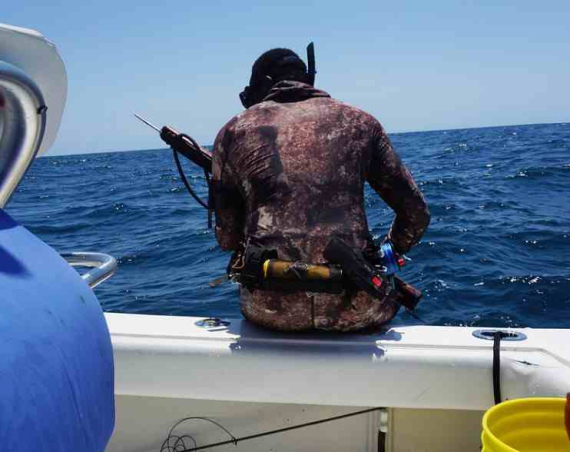The Yellowfin Tuna can be found in most parts of the world and they reside in warm waters. They are caught offshore and it is a target for a lot of people.
During their lifetime they like to cover long distances and they can grow up to 400 pounds or more if you catch one from the Eastern Pacific and they ae mostly found in Mexico.
If you go to Panama, it is another place to catch tuna that weighs 200 lbs. and due to their size, you will hardly see one jumping out of the water, but sometimes they do come out to reach for a bait.
When you are targeting tuna, the best way is to create a scene that will attract the Yellowfin tuna towards you.
Use squid or fish as bait to lure them behind your boat and the tuna will start to come in and eat the bait while peeling line off the reels so that you will be able to battle with the fish properly.
Know Where You Are Going To Find Tuna
This can be difficult because tuna moves to different places and it is important that you know where they are at the moment you are out fishing.
What you can do is to join a group people who have information on where tuna can be found.
After a fishing trip, it is good to have people with you who share the same interests as you. This way, you will find out if the tuna is still in that area because of what your friend told you.
If you want to gain knowledge on these places if the tuna will be going there or not, you can buy a satellite service that is paid so that the temperature of the water and chlorophyll concentrations can be detected so you’ll know which area is good for finding tuna.
You can also go to the internet and look for forums that talk about the presence of fish in your area.
Find Where Life Is
If you see that there are fish, birds, bait, turtles, dolphins, and other forms of life this indicates the presence of tuna in that area.
You need to keep an eye out for these forms of life because if you miss out on seeing them, you might’ve just lost a chance to catch tuna. Boats with tuna towers can gain an advantage because of this.
Do not give up and keeping looking for spots where you will find life to catch tuna.
Techniques You Can Use
Tuna is attracted to lures and bait. There are a lot of techniques that will work and they often feed close to the surface which means that topwater techniques can be used to catch them.
Eyesight of tuna is pretty good so using a fluorocarbon leader helps in reducing visibility and comes with the benefit of abrasion resistance.
Lures
To troll tuna, you can try cedar plugs, skirted trolling lures made of plastic, and tuna feathers. You can also use lures that are blue, white, or green. You can go for treble hooks that come with single or double hooks because they have lesser tendency to bend or shake.
If you find tuna that is concentrated in one area, you can cast lures to bring them in. You can also use poppers and ranger lures can skip over the surface.
Clarity Of The Water
When you are going fishing offshore, the color and the clarity of the water can help you detect the location of tuna.
Going fishing in canyons is good because you are going to find clear water where you are going to find tuna.
This cannot be applied to inshore 30 fathom line where you will easily find Bluefin tuna because they reside in green waters.
Look For Structure
As we all know, the floor of the ocean is not flat because there is a lot of banks, lumps, shoals, ridges, canyons, and holes.
A lot of these structures have specific names for better identification. These are areas that create places for bait fish and tuna to convene in that spot.
There are structures that have a lot of fish every year, but this does not usually happen because fish and tuna keep on moving. The specific structures can be found using their names and a nautical chart for finding the area.
Prepare Yourself For A Fight
Tuna is very strong and powerful and you will feel it right away when they hit your bait. After catching the bait, they will also move quickly and will peel off the line like crazy.
What you should do is to wear them down if necessary, but be careful not to break the fishing line.
Have The Proper Gear
You are going to need a strong kind of gear because when you fight with tuna, this will be beneficial.
The equipment you need should be of good quality and heavy duty. You should always bring an extra line, other gear, and lures.
Match Your Lures
The size of the lure should be the same as the bait so if you have a small bait, use small lure. Using large bait means you need large lures.
One way of knowing this is by opening up the first fish you caught and investigating what is inside their stomach.
Trolling Speed
A lot of fishermen have a trolling speed between 4.5 to 75 knots. Fishermen that use heavy lures have slower trolling speed if you are letting them run deep in cold water for catching tuna.
Speeds that go faster can cover more ground for finding tuna and then slow down once you find them.
These are the most important things to consider when fishing for tuna because you need specific knowledge and skills to catch them. The feeling of being able to catch tuna successfully is great especially when have been trying for so long.



